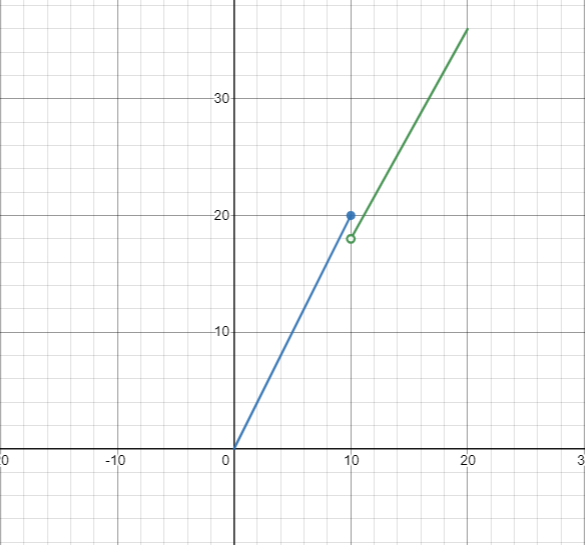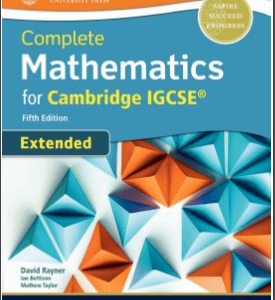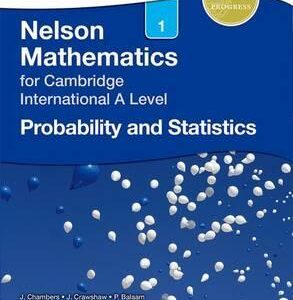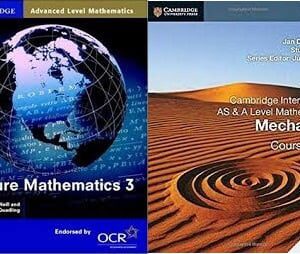The two underlying mathematical operations in Calculus are Differentiation & Integration. These operations involve the computation of the derivative and the definite integral, each based on the notions of limit and continuity. Indeed, continuous function is the most important class of functions studied in calculus. In this article, I will try to cover all relevant concepts of continuous and discontinuous functions through relative examples with a graphical interpretation.
Definition of a Function Continuous at a number: Three major conditions of Continuity
The function f is said to be continuous at the number ‘a’ if and only if the following three conditions are satisfied:
- f(a) exists;
- lim x→a f(x) exists;
- lim -x→a f(x) = lim +x→a f(x) = f(a)
If one or more of these three conditions fails to hold at ‘a’, the function ‘f’ is said to be discontinuous at ‘a’.
How do you know when a function is continuous or discontinuous?
Let’s try to understand the difference between continuous and discontinuous functions through the following examples:
Q1) A wholesaler sells a product by the pound (or fraction of a pound); if not more than 10 pounds are ordered, the wholesaler charges $2 per pound. However, to invite large orders the wholesaler charges only $1.8 per pound if more than 10 pounds are ordered. Find a mathematical model expressing the total cost of the order as a function of the amount of the product ordered, and also determine whether the function is continuous or discontinuous?
Solution: –
Assume $ C(x) as the total cost of an order of ‘x’ pounds of the product. This will express C(x) as a piecewise function as follows;
Here we are checking continuity of C(x) at x=10;
- C(10) = 2(10) = 20
Limit of C(x) at x=10 will exist when both left-hand side and right-hand limit will be same, so let’s check;
limx→ -10 = 2(10) = 20
limx→ +10 = 1.8(10) = 18
So as limx→ -10 C(x) ≠ limx→ +10 C(x);
- limx→ 10 C(x) does not exist
This reveals that function C(x) is discontinuous at x=10. You can develop a better picture of this function in your mind by sketching its graph;

Q2) Consider a function f(x);
check its continuity at x=1.
Solution: –
Let’s simplify the function first;
Here original function has x-1 in its denominator which reveals that f(x) will be undefined at x=1;
- f(1) does not exist
We therefore declare f(x) discontinuous at x=1, and while sketching the graph of f(x) = 2x+3, we will highlight a “hole” at (1,5).

Use the three conditions of the continuity of a function and check whether the following functions are continuous or discontinuous, later sketch their graphs and highlight the point of discontinuity through ‘hole’.
Solution: –
i) Thus f(-3) is undefined, therefore f(x) is discontinuous at x=-3.

Solution: –
i) g(-3) = 1 (well-defined)
ii) Thus limx→-3 g(x) exists.
iii) lim x→-3 g(x) = -5 ≠ g(-3) = 1
Hence function g(x) is not continuous at x= -3.

Solution: –
i) h(4) =2 (well-defined)
ii) lim x→4 h(x) = 5/(x-4) = 5/(4-4) = 5/0 = ∞ (undefined)
Hence function h(x) in not continuous at x=4

Solution: –
i) f(0) = 0 (well-defined)
ii) lim –x→0 f(x) = -1 , and lim +x→0 f(x) = 0
So as, lim -x→0 f(x) ≠ lim +x→0 f(x). Thus f(x) is discontinuous at x=0

Solution: –
Here we are going to check the continuity of a function at x=-2 & x=2.
For x=-2:
- f(-2) = 6+(-2) = 6-2 = 4 (well-defined)
- lim –x→-2 f(x) = 6+ (-2) = 6-2 =4, and lim +x→-2 f(x) = 2- (-2) = 2+2 = 4
thus, lim x→-2 f(x) exists i.e. 4.
- lim –x→-2 f(x) = lim +x→-2 f(x) = 4 = f(-2)
This shows that function f(x) is continuous at x=-2.
For x=2:
- f(2) = 2-2 = 0 (well-defined)
- lim –x→2 f(x) = 2-2 = 0, and lim +x→2 f(x) = 2(2) -1 = 4-1 = 3. So as;
lim –x→2 f(x) ≠ lim +x→2 f(x), thus limit of f(x) at x=2 does not exist; therefore f(x) is discontinuous at x=2.

Q6) Find the values of the constant ‘c’ that makes the function continuous at every number, also sketch its graph.
Solution: –
- f(4) = 3(4) + 7 = 19
- lim –x→4 f(x) = 3(4) + 7 = 19
lim +x→4 f(x) = k(4) – 1 = 4k-1
In order to validate the existence of limit at x=4, L.H.S limit should be equal to R.H.S limit, i.e.
=> 4k – 1 = 19
=> 4k = 20
k=5
- lim x→4 f(x) = f(4) =19
Thus for k=5, function f(x) is continuous at all numbers.

Q7) Find the values of the constants ‘c’ and ‘k’ that make the following function f(x) continuous at every number, also sketch its graph.
Solution: –
Lets check continuity of f(x) at x=1;
- f(1) = 1
- lim -x→1 f(x) = 1
lim +x→1 f(x) = c (1) + k = c+k
In order to validate the existence of limit at x=4, L.H.S limit should be equal to R.H.S limit, i.e.
c+ k = 1 ……………… (1)
Now lets check continuity at x=4;
- f(4) = c(4) + k = 4c+k
- lim -x→4 f(x) = 4c+k
lim +x→4 f(x) = -2(4) = -8
4c+ k = -8 …………………….. (2)
Solving equations (1) & (2) we get;
c= -3 & k=4

Removable and Essential Discontinuity
Consider a simple example to understand the difference between removable and essential discontinuities;
Let ‘f’ be defined by;
The graph of this function;

Has a break at x=1, if we investigate here the three conditions of the continuity of a function, we find that;
- f (1) = 2
- lim x→1 f(x) = 5
- lim x→1 f(x) ≠ f(1)
Conditions (i) and (ii) are satisfied but (iii) is not, function f(x) is therefore discontinuous at x=1.
Note that if f(1) is defined to be 5, then
lim x→1 f(x) = f(1)
and f(x) would be continuous at x=1, for this reason, the discontinuity so declared in the aforementioned example is “Removable discontinuity”.
In general, suppose ‘f’ is a function discontinuous at a number ‘a’ but for which lim x→a f(x) exists. Then either f9a) does not exist or else
f(a) ≠ lim x→a f(x)
Such a discontinuity is a “Removable discontinuity” because ‘f’ is redefined at ‘a’ so that
f(a) = lim x→a f(x)
the new function will become continuous at ‘a’. If the discontinuity is not removable, it is known as “Essential discontinuity”.
Infinite Discontinuity
Let ‘f’ be defined by;

The graph of ‘f’, has a break at the point where x=2; so we investigate there the conditions of continuity of a function;
- f (2) is not defined
Because condition (i) is not satisfied, ‘f’ is discontinuous at ‘2’. The discontinuity is “Essential discontinuity” because lim x→2 f(x) does not exist, and also it is called “Infinite discontinuity”.
Let’s pick another example;
The graph of this piecewise-defined function appears to look like this;

And when we investigate conditions of continuous function, we came to know;
- g(2) = 3
- lim -x→2 g(x) = lim -x→1 1/(x-2) = 1/(2-2) = 1/0 = -∞
lim +x→2 g(x) = lim +x→1 1/(x-2) = 1/(2-2) = 1/0 = +∞
Thus, lim x→2 g(x) does not exist. So as condition (ii) is not satisfied, g(x) is discontinuous at x=2. This discontinuity is “infinite” and of-course “essential” too.
Jump Discontinuity
We define function h(x) as;

Here you can see that the graph of h(x) has a break at the point where x=1, we investigate the conditions of continuous function, and found that;
- h(1) = 4
- lim -x→1 h(x) = lim -x→1 (3+x) = 3+1 =4
lim +x→1 h(x) = lim +x→1 (3-x) = 3-1 = 2
Because, lim -x→1 h(x) ≠ lim +x→1 h(x), thus lim x→1 h(x) does not exist.
As condition (ii) fails to hold thus h(x) is discontinuous at x=1, this is indeed an essential discontinuity,
Besides, as you can see a “JUMP” in the y-coordinate of the point (1,y) from 4 to 2, therefore we enunciate it as “jump discontinuity” too.
Function continuous on an open interval
A function is continuous on an open interval if and only if it is continuous at every number in that open interval.
Right-Hand Continuity
A function ‘f’ is continuous from the right at the number ‘a’ if and only if the following three conditions get satisfied:
- f(a) exists.
- lim +x→a f(x) exists.
- lim +x→a f(x) = f(a).
Left-Hand Continuity
A function ‘f’ is continuous from the left at the number ‘a’ if and only if the following three conditions get satisfied:
- f(a) exists.
- lim -x→a f(x) exists.
- lim -x→a f(x) = f(a).
Function continuous on a closed interval
A function whose domain includes the closed interval [a,b] is said to be continuous on [a,b] if and only if it is continuous on the open interval (a,b), as well as continuous from the right at ‘a’ and continuous from the left of ‘b’.
What is the importance of continuity in calculus and real life?
Calculus is the Mathematics of motion and change, while Algebra, Geometry, and Trigonometry are more static in nature. The development of calculus in the seventeenth century by Newton, Leibniz, and others, grew out of attempts by these and earlier mathematicians to answer certain fundamental questions about dynamic real-world situations. These fundamental procedures, Differentiation, and Integration can be formulated in terms of concepts of limits and continuity of a function. It wouldn’t be wrong if I say that Limit and Continuity is a key to the door of the immense edifice of great Calculus.
Continuity is everywhere in real life, if you try to look around, you think of lengths, weights, temperatures, positions are changing continuously. We use continuous models to describe our financial system and its optimal modeling, our heart rhythms, continuous blood flow inside our bodies, continuous cell division and changes in DNA during the process of mutation, the sound of the song sung by the sparrow on the lush green tree on the nearby road, humming of bees outside our window. Notice that, when you walk from your bathroom to your bed, you move through space continuously; you do not appear suddenly at your bedside having previously been in the bathroom. In short, whatever you study in Mathematics has deep roots in real life, the influence of Calculus in everyday life is undeniable.
Frequently Asked Questions Related to Continuous Functions, Removable, Essential & Jump Discontinuities
Q1) What is a continuous function?
A continuous function is a function where the graph can be drawn without lifting the pen from the paper. In other words, there are no gaps or breaks in the graph.
Q2) What are the different types of discontinuities?
There are three types of discontinuities: removable, jump, and essential.
- Removable discontinuity: A removable discontinuity is a discontinuity that can be removed by changing the value of the function at the point of discontinuity. For example, the function f(x) = x2/(x – 1) has a removable discontinuity at x = 1. This is because the function is undefined at x = 1, but the function can be made continuous by setting f(1) = 0.
- Jump discontinuity: A jump discontinuity is a discontinuity where the function has different one-sided limits. For example, the function f(x) = |x| has a jump discontinuity at x = 0. The left-hand limit of f(x) at x = 0 is 0, and the right-hand limit of f(x) at x = 0 is 1.
- Essential discontinuity: An essential discontinuity is a discontinuity that cannot be removed by changing the value of the function at the point of discontinuity. For example, the function f(x) = sin(1/x) has an essential discontinuity at x = 0. This is because the function f(x) cannot be defined at x = 0 in a way that makes it continuous.
Q3) Can a continuous function have a removable discontinuity?
Yes, a continuous function can have a removable discontinuity. This is because a removable discontinuity can be removed by changing the value of the function at the point of discontinuity.
Q4) How do you find the type of discontinuity of a function?
To find the type of discontinuity of a function, you need to find the one-sided limits of the function at the point of discontinuity. If the one-sided limits are equal, then the discontinuity is removable. If the one-sided limits are not equal, then the discontinuity is either a jump discontinuity or an essential discontinuity.
Q5) What is a continuous function calculator?
A continuous function calculator is a tool that can be used to determine whether a function is continuous at a given point or over a given interval. The calculator will typically ask you to enter the function’s formula, the point or interval of interest, and then it will calculate the function’s limits at that point or interval.
Q6) How does a continuous function calculator work?
A continuous function calculator works by first calculating the function’s limits at the given point or interval. If the limits are equal, then the function is continuous at that point or interval. If the limits are not equal, then the function has a discontinuity at that point or interval.
Q7) What are the different types of continuous function calculators?
There are two main types of continuous-function calculators: online calculators and desktop calculators. Online calculators are available for free on the Internet e.g. Desmos, Wolfram Alpha, Symbolab, etc. Desktop calculators are typically more powerful and feature-rich than online calculators, but they require you to download and install software, e.g. TI-Nspire, Mathematica, Maplesoft, etc.
Q8) How do I choose the right continuous function calculator?
The right continuous function calculator for you will depend on your needs and preferences. If you need a simple calculator that can be used to determine whether a function is continuous at a single point, then an online calculator will suffice. If you need a more powerful calculator that can be used to determine the continuity of a function over an interval or to find the type of discontinuity at a point, then a desktop calculator is a better option.
Q9) What are the benefits of using a continuous-function calculator?
There are several benefits to using a continuous function calculator:
- They can help you to quickly and easily determine whether a function is continuous at a given point or over a given interval.
- They can help you to find the type of discontinuity at a point.
- They can be used to solve problems involving continuous functions.
- They can be used to learn more about the continuity of functions.
Related Articles:
Piecewise Functions: How to Graph Piecewise Functions
Squeeze Theorem & Continuity of Trigonometric Functions
Do you want to boost your academic grades?
Feel free to contact us for qualitative and standardized online Mathematics tuition service
CLICK ON THE LINKS BELOW
For more swift and confident interaction, become a part of our WhatsApp community












